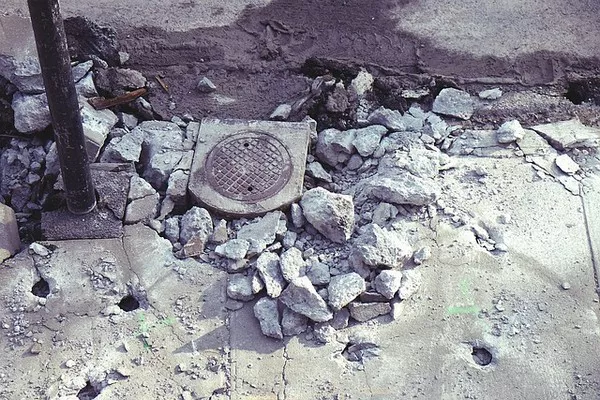Biosolids, the nutrient-rich organic materials derived from wastewater treatment, have gained recognition for their potential to contribute to sustainable agriculture and environmental protection. The treatment of biosolids is a critical process that transforms raw sewage sludge into a safe and valuable resource. This article explores the various methods used in biosolids treatment, highlighting the importance of these processes for public health, the environment, and agricultural practices.
Understanding Biosolids
Before delving into the intricacies of biosolids treatment, it is essential to comprehend what biosolids are and why they are generated. Biosolids are the solid byproduct of wastewater treatment facilities, primarily sewage treatment plants. These facilities treat wastewater to remove impurities and pathogens, resulting in treated effluent that is released into water bodies. However, the remaining solid matter, known as sewage sludge, must undergo further processing to transform it into biosolids.
The transformation of sewage sludge into biosolids involves the removal of harmful pathogens and volatile organic compounds, reducing odor, and enhancing the material’s stability and nutrient content. Once treated, biosolids become a valuable resource that can be safely applied to land for agricultural purposes or utilized in various environmental and industrial applications.
Biosolids Treatment Methods
1. Thickening
The treatment journey of biosolids begins with thickening, a process that reduces the sludge’s water content. In thickening, gravity or mechanical processes are employed to separate the liquid and solid components, resulting in a sludge with a higher solids concentration. This preliminary step minimizes transportation and disposal costs while making subsequent treatment processes more efficient.
2. Stabilization
Stabilization is crucial to making biosolids safer for handling and application. The process involves the reduction of pathogens, volatile organic compounds, and offensive odors. There are several methods for achieving this, including:
a. Anaerobic Digestion: In anaerobic digestion, sewage sludge is placed in a closed system without oxygen. Microorganisms break down organic matter, producing methane gas and a stabilized biosolid material.
b. Aerobic Digestion: Aerobic digestion uses oxygen to encourage the growth of aerobic microorganisms, which break down organic matter in the sludge. This process results in the production of carbon dioxide and a more stable biosolid product.
3. Dewatering
After stabilization, biosolids typically undergo dewatering to further reduce their moisture content. Dewatering methods include centrifugation, belt filter presses, and drying beds. The resulting drier biosolids are easier and less costly to transport, making them more suitable for land application.
4. Thermal Drying
In some cases, thermal drying may be employed to achieve even lower moisture content, creating a more stable and manageable biosolid product. Thermal drying processes use heat to evaporate the remaining water, leaving behind a dry, granular material that is easy to handle and transport.
5. Beneficial Use and Land Application
Once biosolids are appropriately treated and stabilized, they can be applied to land for beneficial use. This is a sustainable practice that enhances soil fertility and reduces the need for chemical fertilizers. The specific application methods can vary, including surface spreading, injection, or incorporation into the soil, depending on local regulations and best management practices.
Benefits of Biosolids Treatment
Biosolids treatment offers several significant benefits, including:
Environmental Protection: Proper biosolids treatment ensures the elimination of harmful pathogens and volatile organic compounds, preventing environmental contamination. This sustainable practice reduces the environmental impact of sewage sludge and lowers the risk to aquatic ecosystems and wildlife.
Soil Improvement: Biosolids are rich in essential nutrients, such as nitrogen, phosphorus, and organic matter, which improve soil quality and fertility. When applied to agricultural land, they enhance crop growth and reduce the need for synthetic fertilizers, thereby decreasing nutrient runoff into water bodies.
Reduced Waste: By treating sewage sludge and transforming it into biosolids, the volume of waste sent to landfills is significantly reduced. This, in turn, lessens the burden on waste management infrastructure and reduces the environmental and economic costs associated with disposal.
Renewable Resource: Biosolids represent a sustainable and renewable resource, given their continuous production at wastewater treatment facilities. This helps create a circular economy by recycling a waste product into a valuable asset for agriculture and other applications.
Economic Advantages: Biosolids treatment reduces the overall cost of sewage sludge management, making it a more economically viable solution. Land application of biosolids also benefits farmers by improving crop yields and reducing fertilizer expenses.
Regulations and Quality Control
The treatment and application of biosolids are subject to strict regulations to ensure public safety and environmental protection. In the United States, for instance, the Environmental Protection Agency (EPA) has established the Clean Water Act and the Part 503 Rule to govern the management and use of biosolids. These regulations set stringent standards for pathogen reduction, pollutant limits, and application rates, ensuring that biosolids are applied safely and responsibly.
Quality control and monitoring are integral to the biosolids treatment process. Wastewater treatment facilities conduct rigorous testing to determine the biosolids’ nutrient content, heavy metal concentrations, and pathogen levels. Regular monitoring helps maintain product quality and safety, guaranteeing that biosolids meet regulatory standards and are suitable for land application.
Conclusion
Biosolids treatment is a critical step in the sustainable management of sewage sludge generated by wastewater treatment facilities. This process transforms raw sewage sludge into a valuable resource that can enhance agricultural productivity, protect the environment, and reduce waste disposal costs. Through thickening, stabilization, dewatering, and other treatment methods, biosolids become a safe and nutrient-rich product that contributes to soil health and fertility while reducing the environmental impact of sewage sludge. Strict regulations and quality control measures ensure that biosolids are applied safely and responsibly, underscoring their significance in promoting sustainability and a circular economy. With increasing awareness of the benefits of biosolids treatment, it is likely that these practices will continue to play a vital role in the responsible management of organic waste materials.


